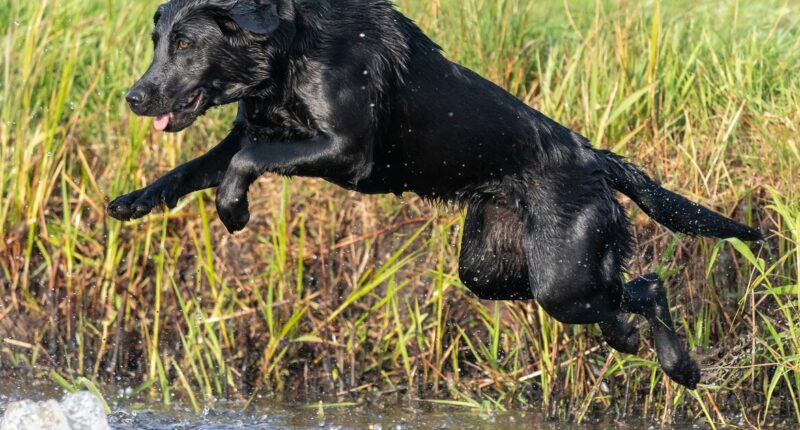Share this @internewscast.com
An expert has issued caution to dog owners this summer due to a “hidden risk” that could be lurking for any pets who enjoy swimming. The warm, stifling temperatures of recent weeks has seen many people scouring social media looking for innovative ways to keep their dogs cool, from buying paddling pools to freezing cooling mats to give them something icy to lay on.
Those keen to see the back of the scorching heatwave are in luck, with some heavy rainfall and a drop in temperatures on the horizon. The Met Office predicts: “Further rain or showers and breezy conditions at times, interspersed with some drier, sunnier periods.
“Temperatures are expected to average out above normal and whilst brief hotter and humid days are possible, the chance of prolonged heat is lower than during the last few weeks.”
The heavier showers can create a risk for dogs, though, with lakes and ponds quickly becoming hazardous due to the potential presence of blue-green algae.
The mix of warm weather followed by wet conditions means blue-green algae is thriving, and dog owners are being encouraged to stay alert during summer walks and swims.
Simon Crawshaw, dog nutrition expert at grain-free dog food supplier, Hilltop Pet Food, says knowing what to look out for is essential right now.
He explained: “At this time of year, it’s really common for certain bodies of water to become less safe, especially after a warm spell followed by rain.
“Most owners just want to do the right thing for their dogs, and being aware of what blue-green algae looks like, and what signs to watch for is one of the simplest ways to stay safe while still enjoying summer walks.”
What does blue-green algae look like?
Despite its name, blue-green algae isn’t actually algae and is, in fact, a type of bacteria – and it’s not always easy to spot.
It’s typically a greenish film or scum that appears on the surface of water, or causes a murky or cloudy appearance to the water.
It often builds up around the edges of still or slow-moving water, especially in warm, nutrient-rich environments which, after the heat of recent weeks, could make it more prevalent across the UK.
Dog owners are urged to beware because if it’s ingested, even in small amounts, blue-green algae “can release toxins that impact a dog’s liver and nervous system”.
Symptoms often appear within minutes to a few hours and may include “vomiting, diarrhoea, excessive drooling, rapid panting, weakness, disorientation, difficulty breathing, or even seizures”.
The Hilltop Pet Food team advises the following steps:
-
Avoid stagnant or suspicious-looking water. If the surface looks scummy, greenish, or unusual, don’t let your dog drink from or swim in it.
-
Stick to running water – streams and rivers are generally safer than still ponds or lakes, particularly after rainfall.
-
If your dog has been in natural water, rinse their coat with clean water as soon as possible to reduce any risk.
-
If your dog shows any unusual behaviour after a walk or swim, especially vomiting, shaking, or acting confused, contact your vet immediately.
It’s also worth noting that local councils and environmental agencies sometimes post blue-green algae warnings near affected areas, while websites like Bloomin’ Algae can be helpful before heading out to popular walking spots.
Simon added: “You don’t need to stop enjoying the outdoors. It’s just about staying informed and making small decisions that keep your dog safe.
“A bit of extra caution goes a long way.”














